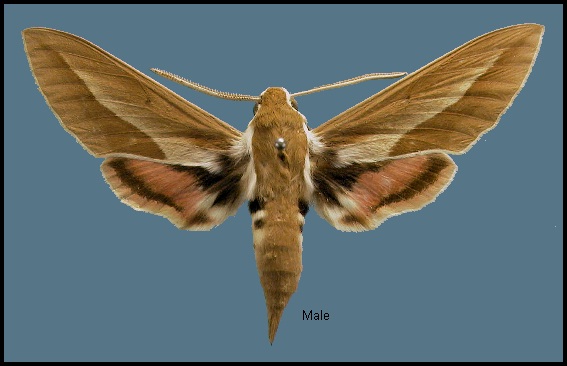
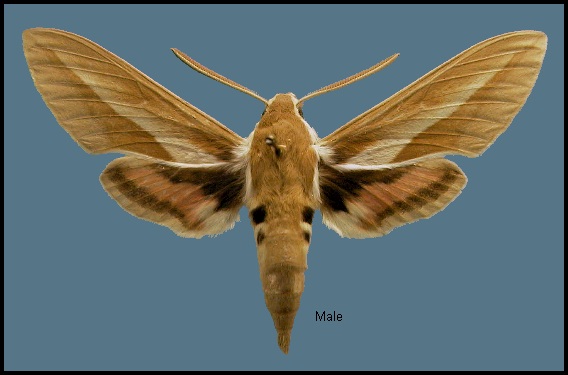
Celerio hippophaes chamyla Denso, 1913, Dt. ent. Z., Iris 27: 37. Type locality: [China, Xinjiang,] western Gobi, Chamyl [Kumul/Hami], 800-900m.
Synonym. Celerio hippophaes chamyla Denso, 1913.
Synonym. Celerio chamyla apocyni Shchetkin, 1956, Izv. Akad. Nauk tadzhik. SSR, (Otdel. Estest Vennijkh Nauk) (16): 143--156. [see Note below]
Note. Subspecies apocyni is not tenable and was, originally, regarded as a form by Pittaway, 1993. In many Hyles species which inhabit desert and semi-desert biomes, specimens from the more arid and hotter areas tend to be paler and smaller than those from less hostile environments; this appeared to be the case with Hyles chamyla. Shchetkin (1956) himself pointed out that many of the specimens of f. apocyni he obtained from the more fertile southern areas of Tajikistan were virtually indistinguishable from the type series from arid Hami/Kumul, China, although most were larger and darker in colour. However, mounting evidence indicates that Hyles chamyla f. apocyni is a hybrid between Hyles chamyla and Hyles hippophaes bienerti (Patzold, Marabuto, Daneck, O'Neill, Kitching & Hundsdoerfer, 2021). That the two species fly together and interact in the Vakhsh Valley of Tajikistan was pointed out by Shchetkin (1956), who confirmed the identity of both species from reared larvae. The two taxa appear to form a population group that is in the process of speciation, with ongoing admixture competing against continuous ecological differentiation. However, Patzold, Marabuto, Daneck, O'Neill, Kitching & Hundsdoerfer (2021) did conclude that further research is needed, including of nuclear data, to clarify the origin, development and maintenance of the pattern they found. Two possible individuals of Hyles chamyla f. apocyni are illustrated in Yakovlev, Gus'kova, Doroshkin & Titov (2015), as Hyles churkini, the status of which is unclear.
Wingspan: 52--75mm. Varies, with some resembling a pale, creamy Hyles hippophaes bienerti. A few even look like Hyles centralasiae in having a large discoidal spot in the pale median stripe of the forewing, which itself can be very faint or pronounced. Easily mistaken for a hybrid between Hyles euphorbiae and Hyles hippophaes bienerti. The pink area of the hindwing can be intense or faint.
A species of Elaeagnus/Apocynum thickets along river-banks and on river flood-plains. However, with the cultivation of Apocynum (dogbane) as a fibre-plant and the introduction of extensive irrigation projects, Hyles chamyla (or hybrids thereof) has/have spread along irrigation canals and become a local pest of cultivated dogbane in Uzbekistan and Tajikistan (Gerasimov & Gerasimova, 1932; Shchetkin, 1956). Such human intervention has also facilitated the breakdown of barriers between Hyles chamyla and Hyles hippophaes bienerti.
An avid visitor to Cistanche flowers at dusk, along with Hyles hippophaes bienerti (Shchetkin, 1956). By day, most adults rest among grass tussocks.
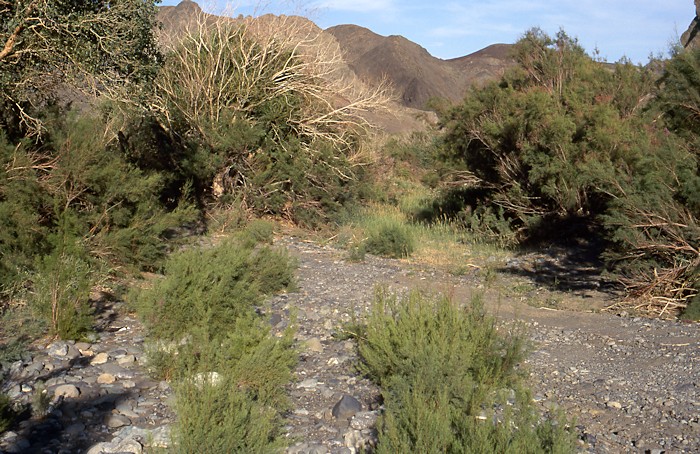
China: 7.vii (Xayar). Mongolia: 1-6.vi (Gov'-Altai Province); 29-30.vi (Khovd Province); 8-10.vii (Khovd Province).
OVUM: Unknown, but presumably as Hyles euphorbiae.
LARVA: Full-fed, 55--80mm. Dimorphic: khaki grass-green or bluish-grey.
Similar to that of Hyles hippophaes bienerti, a species with which it appears to share a common ancestor, but with significant differences. The coloration and pattern tend to remain the same for all instars. In the final instar the primary body colour is pale khaki grass-green, although some have a bluish-grey suffusion. The legs, prolegs, anal claspers, head and shield are of the same colour. The body is covered with small yellowish-white dots, but these are usually larger and fewer in number than in Hyles hippophaes bienerti, and may even be absent. The horn is yellow with a black tip. Spiracles pale with, in many, dark marks either side. Unlike in Hyles hippophaes bienerti, no dorso-lateral stripe is present and there is no elongated yellow spot at the base of the horn. A ventro-lateral yellowish-white band runs from thoracic segment 1 to abdominal segment 8. In some individuals the dorsal surface has a slight cinnamon hue, whilst others bear large but regular black patches (Shchetkin, 1956).
The larvae are voracious feeders and grow very quickly, particularly in the fourth and fifth instars.
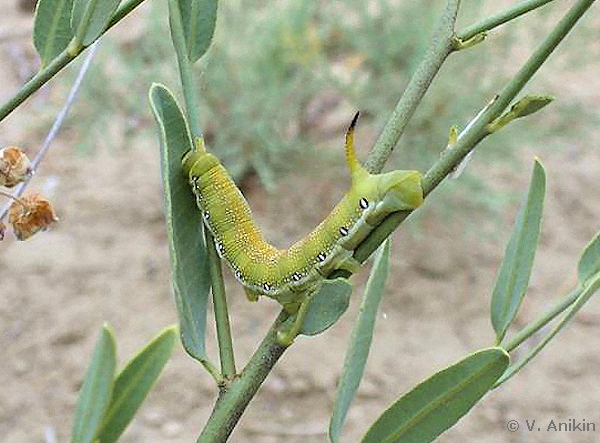
PUPA: Very similar to that of Hyles euphorbiae, but slightly smaller. Formed in a chamber in the soil. Summer pupae remain at this stage for only nine to fourteen days. Overwinters as a pupa.
Larval hostplants. Recorded from Khovd Province, Mongolia, on Apocynum pictum (Yakovlev, Gus'kova, Doroshkin & Titov, 2015). Additionally, Hyles chamyla f. apocyni (Shchetkin) is recorded from Tajikistan and Turkmenistan on Apocynum (Shchetkin, 1956; 1960), particularly Apocynum venetum var. scabrum and Apocynum venetum [syn. Trachomitum venetum] (Shchetkin, 1956). These plants grow along the open, drier fringes of riverine vegetation. However, searches by the first author along several rivers on the southern slopes of the Tian Shan, north of Turpan, in 1995 failed to find this species, even though Apocynum was present.
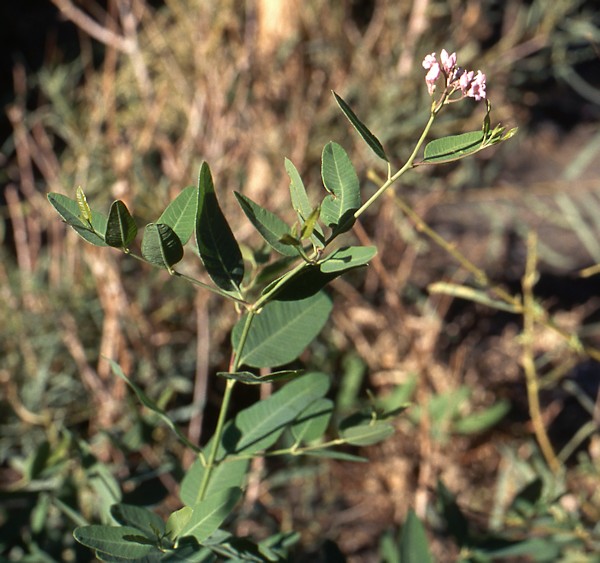
Unknown.
China: Xinjiang (Hami/Kumul; Barkol; Xayar).
Mongolia: Khovd Province (Dzhungarian Gobi, Uvhod-Ula Mts., 15-45 km SW Bulgan, 1350m; Dzhungarian Gobi, 20 km N Zeegijn border post, 1400m (45°17'N 92°09'E)); Gov'-Altai Province (Zahuin Gov' Desert, near Tahilt (45°01'N 96°28'E); Alag-Nuur [lake], near Ajlyn-Tsagan-Khuduk, 1300m (45°09'N 94°30'E)).
Northwestern China and southwestern Mongolia (Saldaitis & Ivinskis, 2006; Yakovlev, Gus'kova, Doroshkin & Titov, 2015; Yakovlev & Doroshkin, 2017). Also southern Tajikistan, southern Uzbekistan and southern Turkmenistan (Gerasimov & Gerasimova, 1932; Shchetkin, 1956; Derzhavets, 1984).
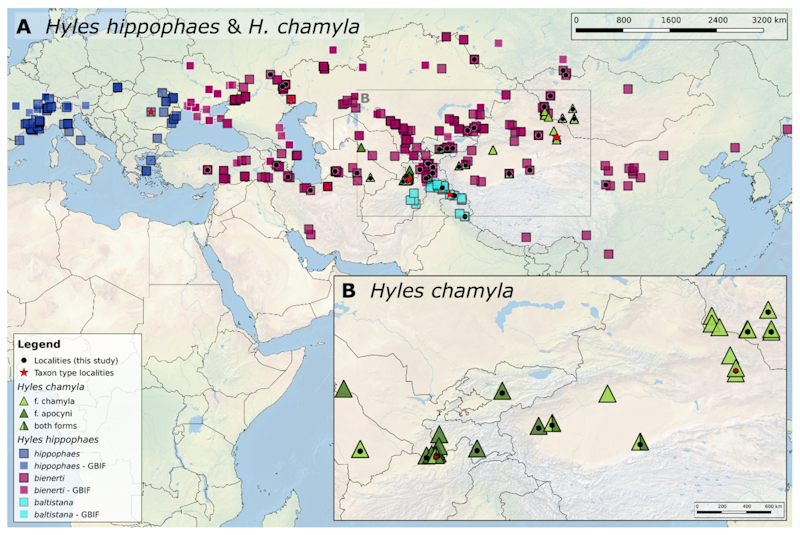
Map: Distribution of Hyles hippophaes and Hyles chamyla in Europe and Asia. Blue of differing shades and magenta squares mark occurrence points of the three infraspecific taxa associated with H. hippophaes; green triangles mark occurrence points for the two H. chamyla forms; black dots indicate genetic samples used in this study; red stars mark the type localities of the taxa; white borders indicate data points derived from GBIF. (© Eduardo Marabuto, in Patzold, Marabuto, Daneck, O'Neill, Kitching & Hundsdoerfer, 2021).
Holarctic; western Palaearctic region. Pleistocene refuge: Monocentric -- Turanoeremic refuge.
 Return to Sphingidae of the Eastern Palaearctic species list
Return to Sphingidae of the Eastern Palaearctic species list